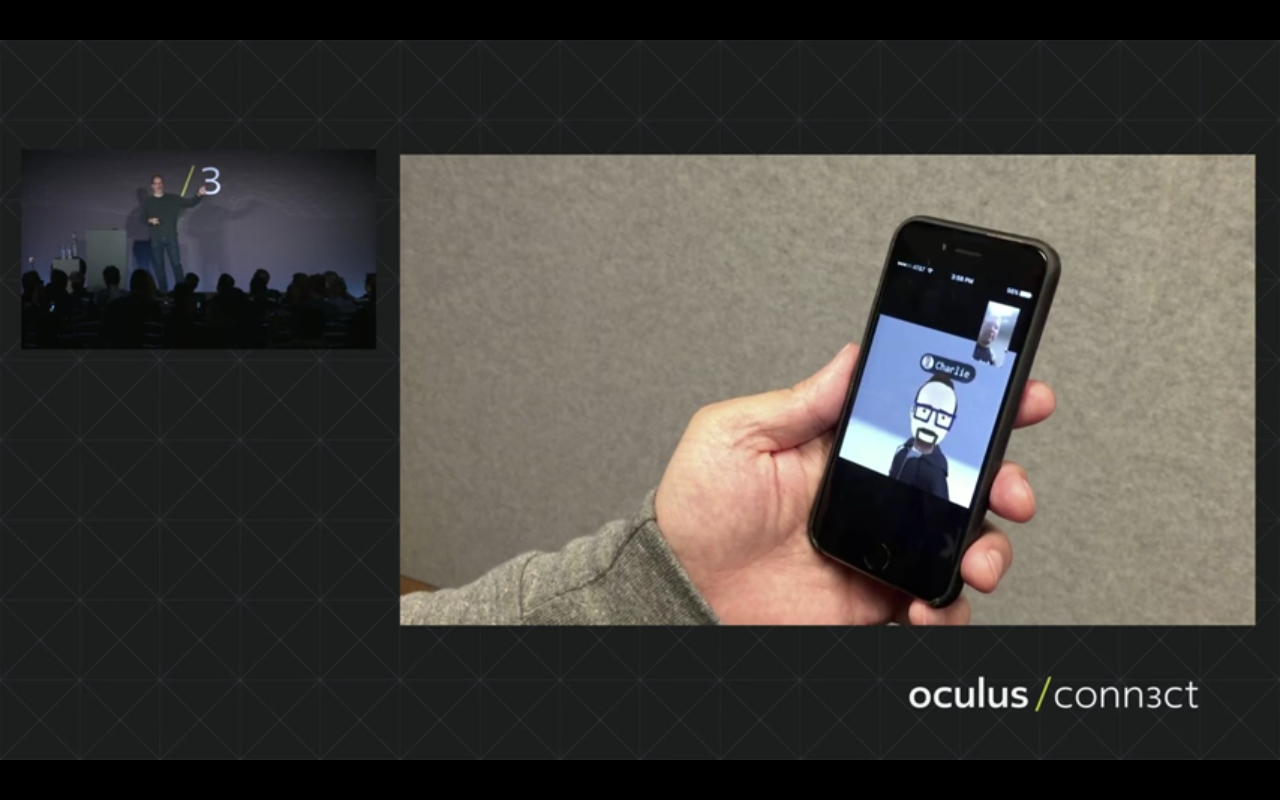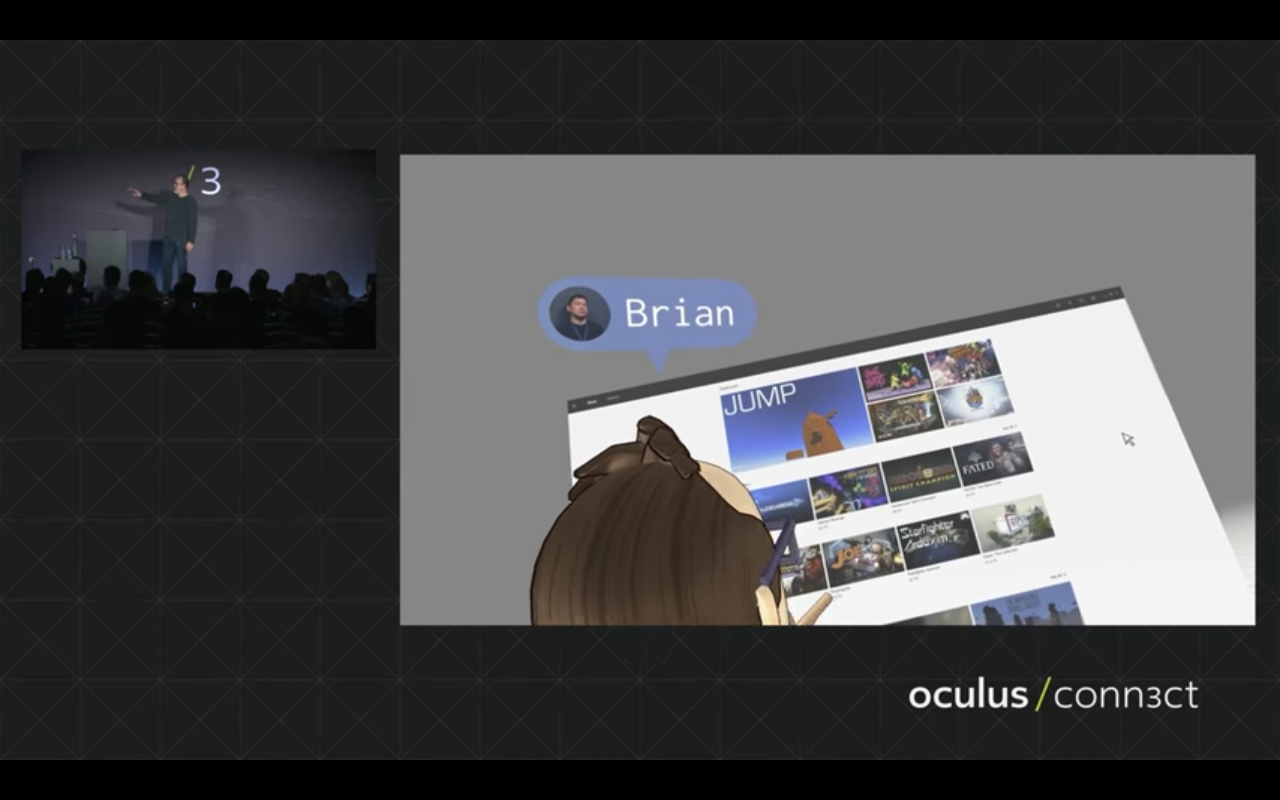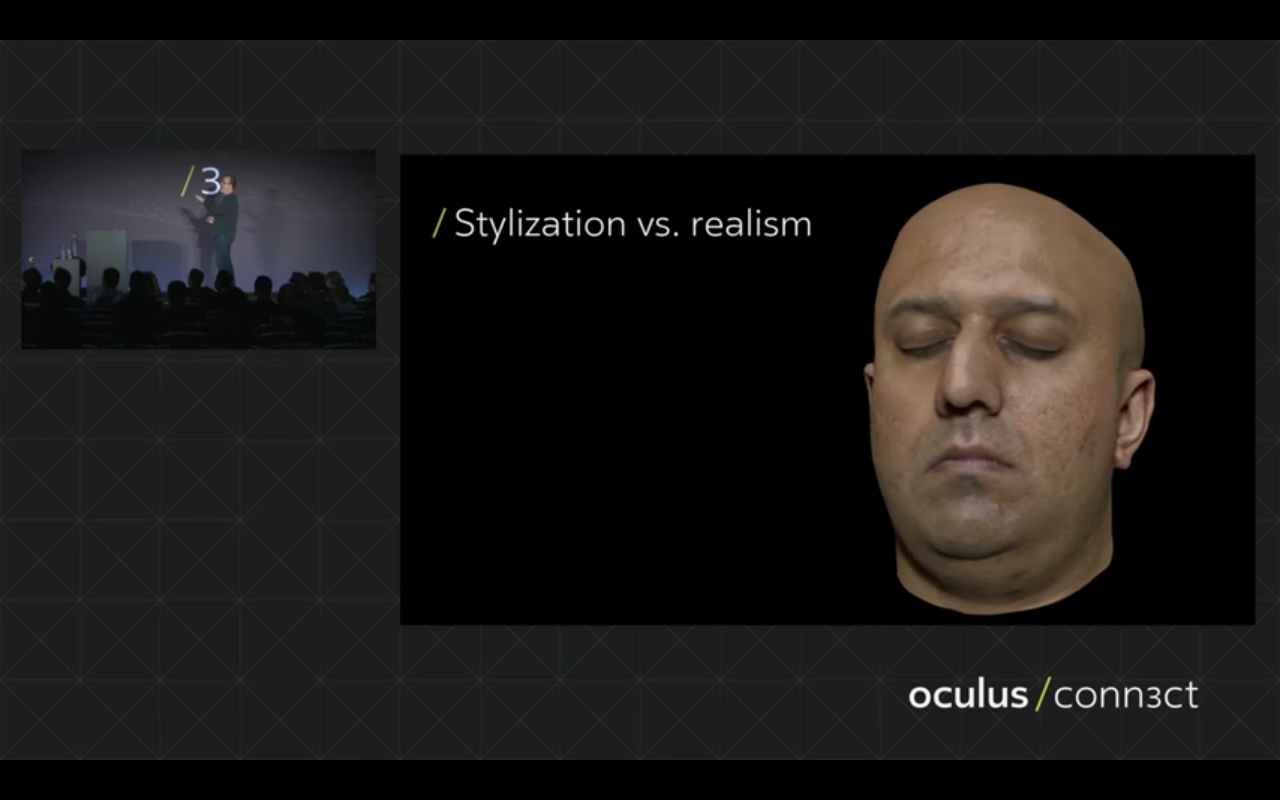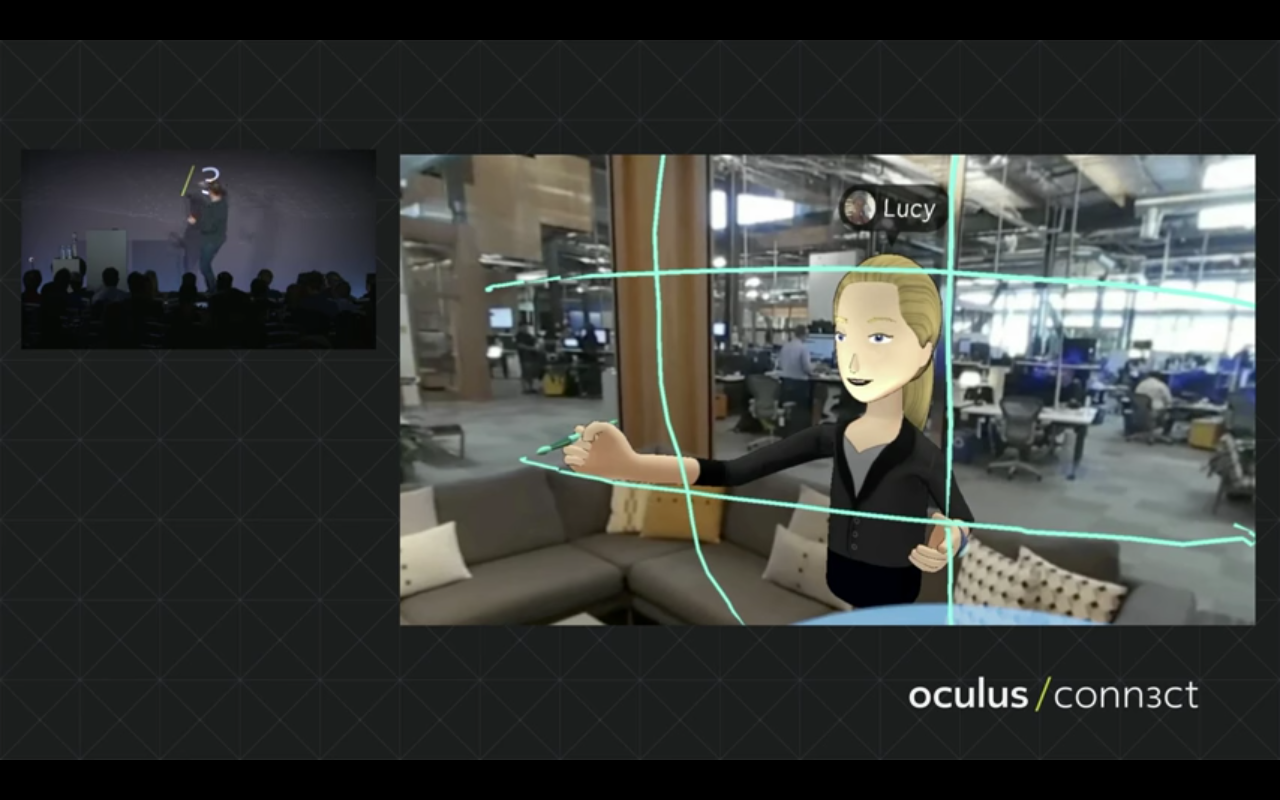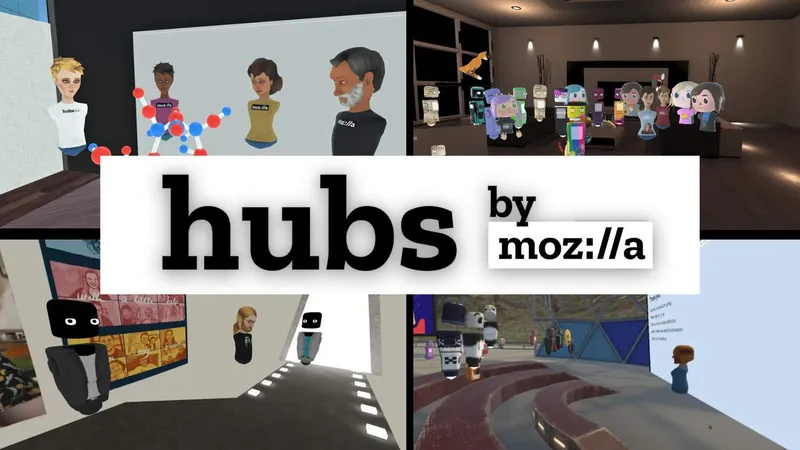You might remember the virtual avatar of Mike Booth, Facebook’s Product Manager of Social VR; we all saw it on-stage at Oculus Connect 3 two weeks ago. But Booth was also at the developer conference in the flesh to deliver a fascinating look at the near future of social VR.
‘Social VR: A Conversation With Mike Booth’, as his session was called, revealed new features that Facebook is working on for its social experiences that weren’t included in the keynote demonstration.
What We Didn’t See At The Oculus Connect 3 Keynote
[gfycat data_id=”FairCoordinatedGonolek”]
At one point in the keynote demo at the developer conference, CEO Mark Zuckerberg held a live video call with his wife, Priscilla Chan. In his session, Booth revealed what those Facebook Messenger calls look like for people calling into VR with their smartphones. They see the virtual avatars just as we did on-screen, and the person in VR can choose where the caller is looking.
[gfycat data_id=”EnergeticHeartyAnnelida”]
The background in Booth’s picture is a simple grey, but callers should also be able to look at the 360-degree environments that avatars are standing in, as seen in the demo.
“This is early days,” Booth said. “We plan to do a lot more with this.”
Interestingly, Booth also talked about VR meetings he was hosting with his team using these features. He showed his avatar browsing through the Oculus Home store on a virtual screen, mentioning that he used this feature weekly as he traveled away from Facebook HQ to meet with colleagues and share notes. Think of it as Facebook’s own take on BigScreen.
Oculus CTO Michael Abrash himself said he didn’t expect to be using productivity apps in VR for about five years, so it’s interesting to learn that Facebook employees are already using these features, however primitive.
Building a Social VR Platform
Booth also touched upon some of the decisions Facebook has taken with its social VR experiments. The cartoon avatars, for example, were favored over more realistic ones. He brought up a life-like 3D head model and discussed the difficulties of animating it for VR and the strangeness of having a floating human head talking to you in VR. Stylized avatars, meanwhile, allow for exaggeration and are more “charming” and “inviting”.
Complexity was also an issue for the environments. Early experiments included large areas that players could navigate, or even get lost inside. Facebook ultimately went with 360-degree locations using live-action footage that kept people centered around the same spot.
It’s not that these potential applications aren’t viable VR experiences, more that they were “distractions” to Facebook’s core goal of creating a social space in which users would constantly stay connected. That’s why you’ll be playing cards at a table and not running around with paintball guns or playing catch.
For that reason, the activities they focused on enabling were things we already do in real life. Watching videos with friends, for example, could be one of the key features considering most of Facebook’s video content is shared between friends.


